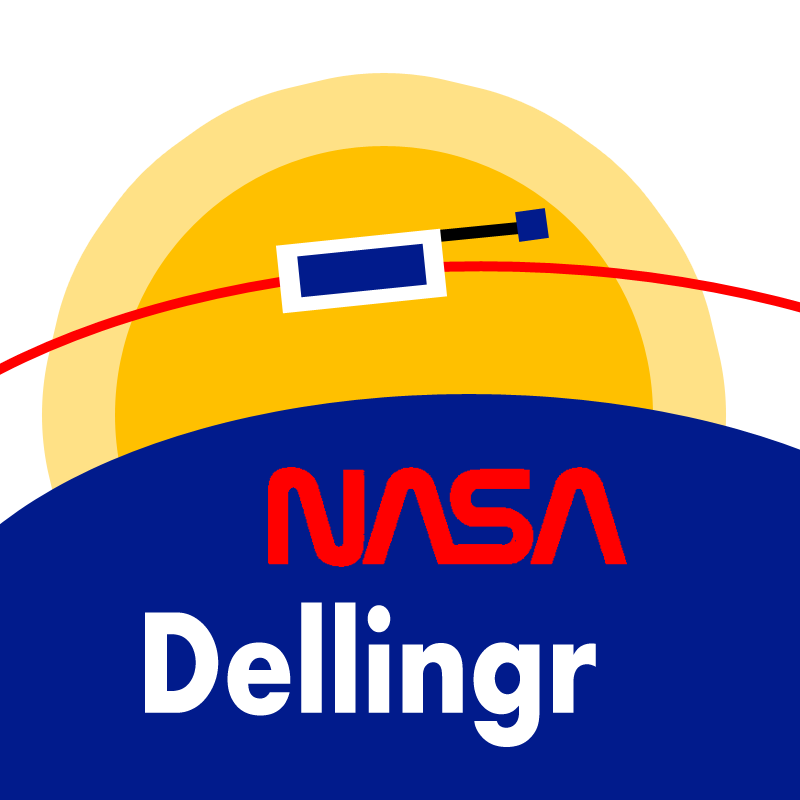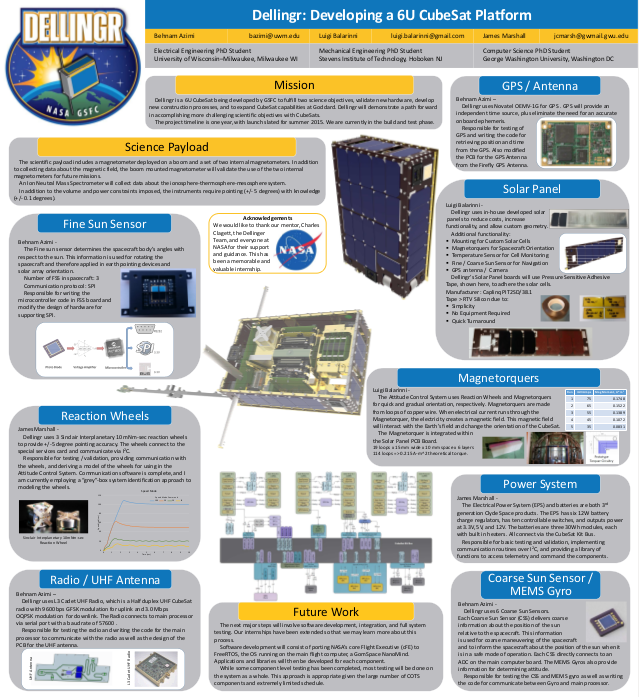
|
Misc /
CubeSatNotes on Size / TerminologySmall or Minituarized satellites are typically anything less than 500kg. As sizes began to shrink further, new categories emerged: < 100kg are Microsatellites, < 10kg are Nanosatellites, < 1kg are Picosatellites, and <.1kg are Femtosatellites. Not the scale one would expect from the prefixes. This puts a 1U CubeSat in the Pico category, and 6U in the Nano category. Recent CubeSat DevelopmentsThere is currently a push within NASA to expand the CubeSat program, largely as a means to disperse risk across a large number of inexpensive (~100k in materials, total mission cost of ~1 million) missions. To accommodate more advanced payloads and meet their requirements (such as pointing accuracy), a 6U size standard has been adopted. The educational aspect of CubeSats is still paramount, with many of the initiatives aimed at high school and university programs. See http://www.nasa.gov/cubesats/ for more information. However, there is also interest in developing technologies to enable CubeSats to explore beyond low earth orbit. To spur development in such technologies, NASA is in the process of developing a competition targeting propulsion and communication systems: Request For Comment and draft of rules. This is part of the Centennial Challenges program. For information about the first CubeSats, see the first generation page.  DellingrDellingr is a 6U CubeSat currently under development at NASA Goddard Space Flight Center. The science payload consists of an Ion / Neutral Mass Spectrometer to study particles at Low Earth Orbit. There are several technical experiments as well, such as evaluating MEMS accelerometer and the suitability of using internal magnetometers. The magnetometers will be compared to an external magnetometer on a boom.  Full Poster: Attach:dellingr_poster.pdf The satellite is meant to demonstrate the capabilities of a 6U bus, and that development can be done with a limited budget and schedule. Dellingr will be launched from the International Space Station and is expected to collect as much data as possible over the next several months, before its orbit eventually degrades. This past summer, myself and two other interns joined the team. This poster (left) summarizes our work. I was tasked with interfacing with reaction wheels and Power Supply systems. Continuing the work during the fall semester, I am working more on the command and data handling software (NASA's Core Flight Executive (tutorial)/ OSAL, on top of FreeRTOS). The experience has been unique. While small, CubeSats still require many of the subsystems found on much larger spacecraft. For example, while Dellingr lacks thrusters, it still has a attitude control system using a mix of reaction wheels and magnetorquers for actuation, and a variety of sensors. With a small team, the result is that everyone ends up doing a wide variety of jobs and working closely with diverse groups. Conferences and Workshops
Fake / Pay-Per-Publish ConferencesIn searching out venues to publish, I have started to stumble across what can best be described as predatory conferences. The red flags: high fees to submit; papers are of low quality; about every topic under the sun in co-located tracks. One of the first ones I located was, The Seventh International Conference on Advances in Satellite and Space Communications: SPACOMM 2015. Held in Barcelona, Spain, co-located with NexComm, http://www.iaria.org/conferences2015/SPACOMM15.html. A quick search found that I am not the only one suspicious: Scholarly Open Access blog. Here is another suspicious conference: Small Satellites Systems and Services Symposium http://congrexprojects.com/2014-events/4S2014/home. Registration is 750 Euros... but it does seem to actually be sponsored by the ESA. The best way to find venues is the old standard: read papers and look where they are published. The list here should not be considered vetted. Misc LinksList of CubeSat component suppliers: http://cubesat.calpoly.edu/index.php/collaborate/suppliers |